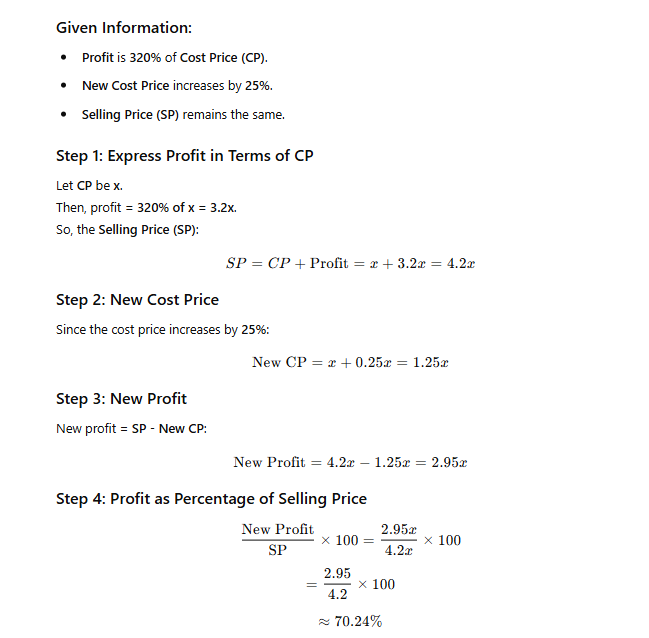In a certain store, the profit is 320% of the cost. If the cost increases by 25% but the selling price remains constant, approximately what percentage of the selling price is the profit?

Another Methode
First, let’s establish our initial scenario: The profit is 320% of the cost, which means: Profit = 320% × Cost = 3.2 × Cost
To find the selling price, remember that: Selling Price = Cost + Profit Selling Price = Cost + 3.2 × Cost Selling Price = 4.2 × Cost
Now, when the cost increases by 25%: New Cost = Original Cost + 25% of Original Cost New Cost = 1.25 × Original Cost
Since the selling price remains constant, the new profit will be: New Profit = Selling Price – New Cost New Profit = 4.2 × Original Cost – 1.25 × Original Cost New Profit = 2.95 × Original Cost
To find what percentage the new profit is of the selling price: Percentage = (New Profit ÷ Selling Price) × 100 = (2.95 × Original Cost ÷ 4.2 × Original Cost) × 100 = (2.95 ÷ 4.2) × 100 = 0.7024 × 100 = 70.24%
Therefore, after the cost increase, the profit is approximately 70.2% of the selling price.
To help understand this intuitively: Originally, most of our selling price (320% of cost) was profit. When costs went up by 25%, we had to pay more for the product while keeping the same selling price, so naturally, our profit took a hit. However, we still maintained a healthy profit margin of about 70% of the selling price, showing how a high initial profit margin can help buffer against cost increases while maintaining competitive pricing.
